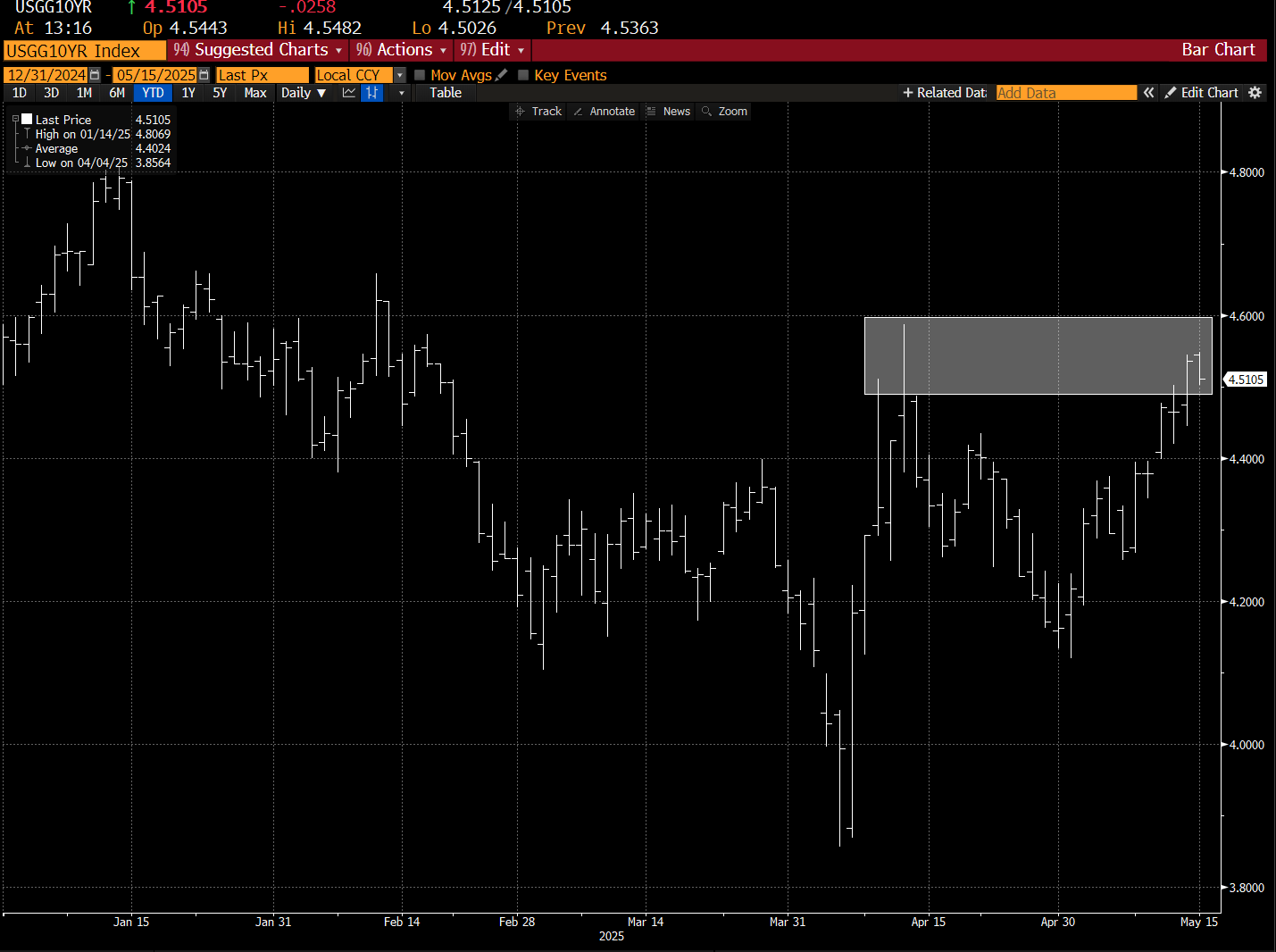The Vol Reset That Doesn’t Hold
Trade ideas to profit from higher volatility.
Volatility has faded across nearly every major asset class over the last two weeks. The VIX has shed its 20-handle, now sitting below the pre-Liberation Day highs. Rates volatility, measured by the MOVE index, has followed suit. Even in FX, one-month ATM implied vol for EUR/USD is back below early April levels. On the surface, this looks like resolution. But that interpretation feels premature.
Markets have taken the pause in tariff escalation as a durable pivot, a green light for risk. But the reality is that we’ve simply entered a lull. Volatility has compressed, but the distribution of outcomes hasn’t. And for those who can still feel the rhythm of regime shifts, this may be the best opportunity in months to re-engage from the long side of vol.
Tariff Pause ≠ Peace
Since early April, the United States has signed just one formal trade agreement with the United Kingdom. In global trade terms, that’s not strategy; it’s symbolism. The deal was politically convenient, light on substance, and struck with a partner whose share of U.S. trade volume is marginal.
More importantly, even under the most generous interpretation of the current 90-day pause, residual tariffs would still reflect the most elevated regime since the aftermath of World War II. The idea that we’ve stepped back from the brink is misleading. We’ve simply entered a quieter phase of the same confrontation, one that remains unresolved and prone to episodic flare-ups.
Good News Priced In
The fall in volatility tells us a few things about the market's current thinking. First, it shows us that the worst-case scenario of a global trade war is now firmly in the rearview mirror. From that angle, we agree.
Yet the extent of the drop in volatility hints that good news is now priced in, particularly in the equity space. We’re more sceptical about this because the recent earnings season provided plenty of uncertainty for investors. We wrote about this in more detail, specifically flagging up companies that removed full-year guidance.
Further, just as some were quick to discard Trump’s tariff hardline rhetoric and bark with no bite, shouldn’t we be just as quick to issue caution when it comes to the administration talking about positive Chinese discussions or potential trade deals with India, etc? We haven’t had anything concrete through that would justify the extent of the optimism being felt on this 18% rally over the past five weeks in the S&P 500.
For those wondering why the VIX hasn’t spiked during this rally, it’s important to note some key dynamics behind the index. There’s an asymmetry between fear and greed in the options market. When markets fall, investors rush to hedge or reduce exposure, leading to a spike in demand for put options. In turn, this pulls implied volatility higher, causing the VIX to jump.
Fear is more intense and sudden than optimism. The mood shift in recent weeks has brought about a large move in the cash market, but demand for calls isn’t on the same level as demand for puts during a sharp move lower. Put another way, the options market tends to price downside protection more expensively than upside speculation.
Where We Head From Here
US equities are the obvious place to start when targeting assets. The rally over the past month looks overstretched, according to the technicals.
Even though rising market breadth (a larger number of individual stocks are participating in a market rally) is a good thing, the concentration of them that are overvalued is worrying.
At an index level, the S&P 500’s 14-day RSI indicates that it is overbought.
Another factor is that we’re still having warning signs from other assets, such as gold, USD and Treasury yields, which makes US equities stand out more as a place where a move lower (and vol higher) could be evident.
Treasuries are selling off, with the 10-year yield pushing back to April 2nd levels:
The dollar index (DXY) is very telling, with the index down over 3% still from the start of April, and the broader bearish trend from the start of the year still intact.
These cross-asset moves, along with others that we don’t have time to run through in detail, make us believe that equities have got a little ahead of themselves.
How to Get Long Volatility
This is arguably the most interesting part for consideration. Volatility isn’t a listed stock; it’s not a currency, so how exactly can you express a view of it?
If there’s one thing that annoys us, it’s FinTwit trying to make out that you can directly trade the VIX. You can’t. The VIX is a calculated index (not a tradable asset), but you can trade financial instruments based on it.






